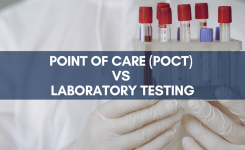Blog
Leptospirosis Testing and Prevention Insights
Leptospirosis, a global infectious disease caused by pathogenic species of the genus Leptospira, affects both humans and animals, leading to approximately one million new cases annually, with 5-10% resulting in fatalities (Costa et al., 2015). In this article, we delve into Recognizing Symptoms & Transmission as well as the various testing procedures medical clinics can use to accurately test leptospirosis.
Recognizing Symptoms & Transmission
Leptospirosis is a bacterial infection that poses a severe threat to an individual’s health. The infection primarily spreads through the urine of infected animals, contacting contaminated water or soil a potential risk, especially if one has open wounds. The symptoms can be easily overlooked as they mimic those of the common flu, including abdominal pain, chills, headache, high fever, muscle aches, vomiting, and yellowing of eyes and skin. The incubation period of the infection typically ranges from 5 to 14 days, but it can extend up to 30 days.
Testing, Treating, and Preventing Leptospirosis
Early detection of leptospirosis is crucial to prevent serious complications. Therefore, it is imperative to seek leptospirosis testing if you suspect exposure. One such reliable test is the Aria Leptospira Test, which is quick, painless, and provides peace of mind for timely treatment if necessary.
Preventing Leptospirosis infection is equally important, particularly for those who have come into contact with infected animals or areas where bacteria are present. To minimize the risk, avoid contact with infected animals’ urine or body fluids, especially if your skin has any cuts or abrasions.
Leptospirosis in the Philippines
The Philippines is facing a significant challenge with Leptospirosis testing, especially in overpopulated areas with poor environmental sanitary processes. As of April 2023, there were 1,015 recorded leptospirosis cases nationwide, marking a staggering 188% increase from the 353 cases recorded in the same period in 2022. Sadly, the number of confirmed deaths caused by leptospirosis also rose to 85, compared to the 50 recorded deaths in the previous year, as the Department of Health-Epidemiology Bureau (DOH-EB) reported.
AVAILABLE HERE: Aria Leptospira IgG/IgM Combo Rapid Test
Aria Leptospira Test Advantages
The Aria Leptospira Test offers a range of significant advantages that make it a valuable instrument in diagnosing Leptospirosis. One of its key benefits lies in its versatility, as it can effectively analyze serum, plasma, or whole blood samples. This flexibility allows healthcare professionals to utilize several types of samples depending on the situation, making the testing process more accessible and efficient.
Moreover, speed is of the essence when dealing with infectious diseases like Leptospirosis. The Aria Leptospira Test stands out in this regard by providing results within an impressively short period of just 15-20 minutes. This rapid turnaround time enables healthcare providers to swiftly assess a patient’s condition and take immediate action, which can be instrumental in preventing the disease from progressing to severe stages.
It offers a preliminary test result for the diagnosis of L. interrogans infection. This added functionality aids healthcare professionals in better understanding the nature and severity of the infection, leading to more targeted and effective treatment strategies.
With continuous efforts in understanding Leptospira pathogenesis, early detection through reliable tests like the Aria Leptospira Test, and proactive prevention measures, we can strive to combat and mitigate the impact of this infectious disease on both human and animal populations. By promoting awareness and implementing comprehensive strategies, we can move towards a healthier and safer future for all.
Sources:
Frontiers | Editorial: Leptospirosis: pathogenesis, clinical and epidemiological aspects (frontiersin.org)
Increase in leptospirosis cases seen amid heavy rains (msn.com)
PH logs 188% rise in leptospirosis cases | Philippine News Agency (pna.gov.ph)
Leptospirosis – PAHO/WHO | Pan American Health Organization
Infection | Leptospirosis | CDC








